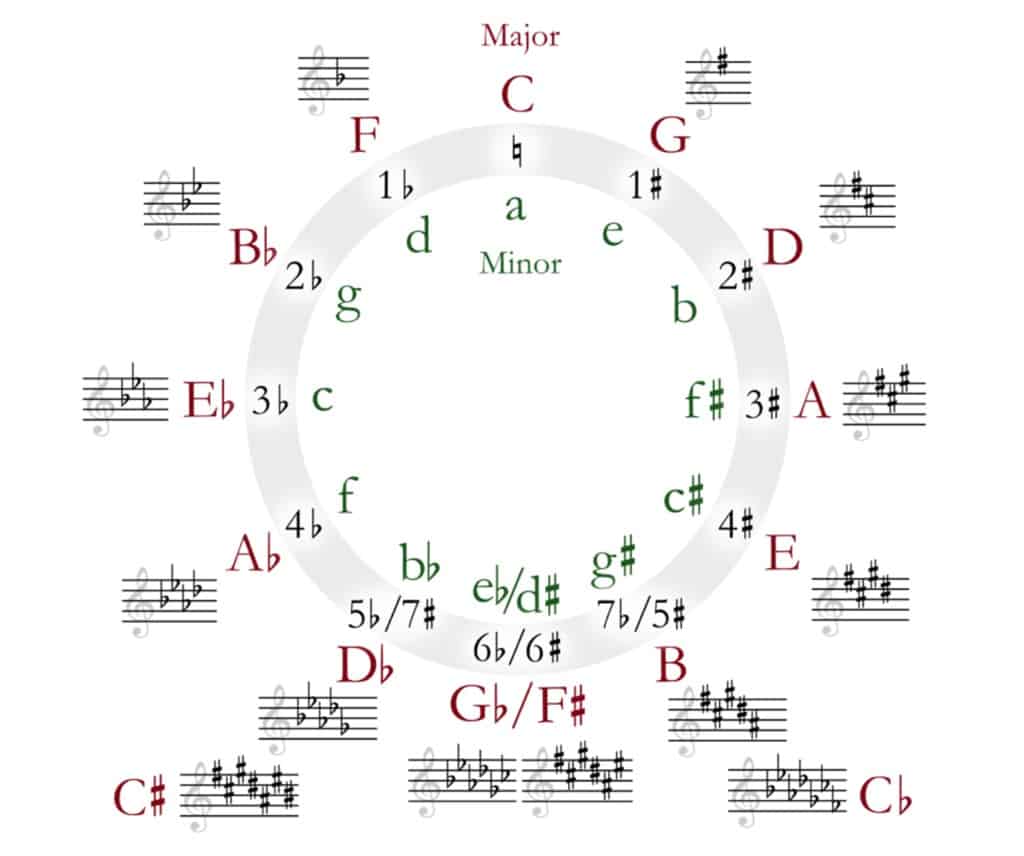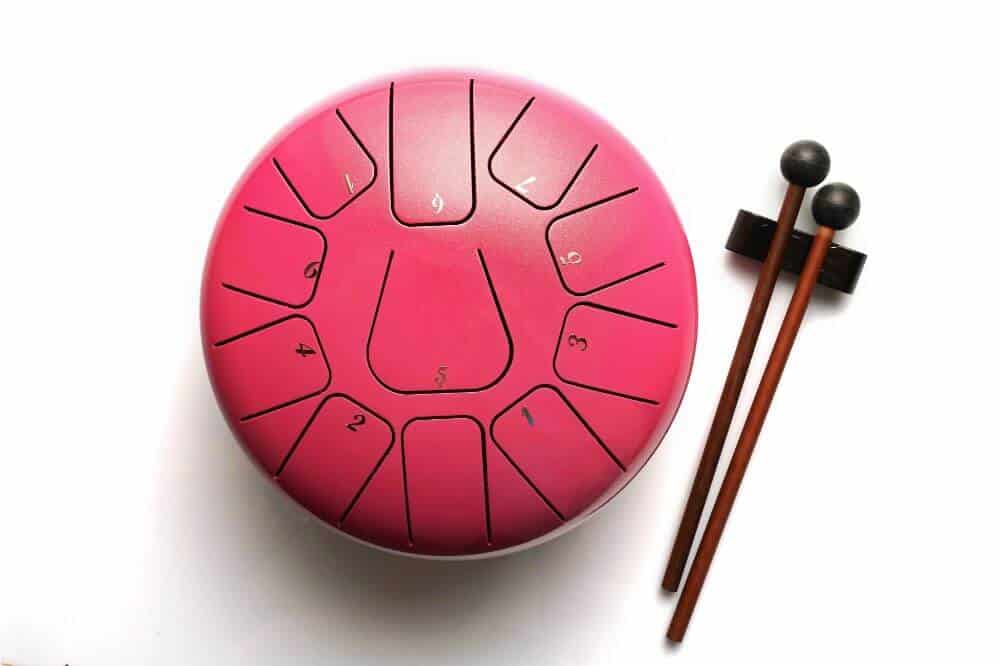If you are new to the tongue drum, you may be wondering how the notes are organized so that you can play it most efficiently.
The answer depends mostly on the type of drum you have and the notes it produces. Here’s a closer look at how are notes organized on a tongue drum.
Pitches and Scales of Tongue Drums
The way a tongue drum’s notes are organized depends on its pitch and scale. To understand the notes of a tongue drum, it’s essential to first understand these terms. Without delving into too much music theory, here is a quick overview.
Pitch
Musical instruments make sounds by vibrating at specific frequencies. There is a difference between the mathematical frequency (the ‘fundamental frequency’) of vibration and how our brains hear and process that frequency.
Our brains hear a musical frequency called the ‘pitch.’ The instrument’s pitch is usually determined by that instrument’s lowest frequency.
Pitch is significant if you are planning on playing a tongue drum along with other instruments because they should have the same pitch to sound harmonious with each other.
Scale
A scale is the set of notes organized around that fundamental frequency or pitch. Scales can ascend (going up from the fundamental frequency) or descend (going down from that fundamental frequency).
Scales are usually designed to span one octave. An octave is an interval between when a frequency doubles. For example, if one frequency vibrates at 440Hz, the sound produced at 880Hz is one octave higher.
The scale organizes notes to sound at regular intervals within the octave. Steel tongue drums are available in a vast range of pitches and scales, and here are some of the most popular:
- Pentatonic. The pentatonic scale is ancient and very common in Western music. It has five notes per octave: C, D, E, G, and A.
- Diatonic. The diatonic scale has five whole tones and two semitones in each octave. These seven sounds are created by a sequence of perfect fifths when each sound has a frequency ratio of 3:2.
- Chromatic. The chromatic scale has 12 notes, each separated by a semitone. It’s the most common scale of western instruments, like the piano.
- C Major. C Major is one of the most common scales in Western music, with no flat or sharp notes. It can be played on the piano’s white keys in C, D, E, F, G, A, and B.
- E Minor. E minor is a popular scale for guitar music since it is the natural scale for standard guitar tuning. E minor includes the notes E, F#, G, A, B, C, and D.
- Akebono. Akebono is a traditional Japanese scale. It uses the same intervals as a diatonic scale but can be pitched to a wider variety of notes.
How are Notes Organized on a Tongue Drum
As you can see, knowing the pitch and scale of a tongue drum determines how many tongues the drum has and how they are organized.
The Circle of Fifths
One very common way to lay out a tongue drum in the diatonic or chromatic scale is using the circle of fifths.

This diagram organizes the notes of a 12-note scale into a circular pattern that ends where it begins. It places the most commonly related flats and sharps next to each other in an arrangement that mirrors the perfect fifths of the diatonic scale.
Because this note arrangement reflects the acoustic relationships between notes and is naturally round, it is logical to organize the notes on a tongue drum in these scales.
There can be a wide range of layouts for tongue drums that aren’t in the diatonic or chromatic scales depending on the scale and number of notes it contains.
Most tongue drums come with a diagram that indicates what the notes are and how they are organized. If your drum did not come with that information, you could use an app or online tools to identify the drum notes.
Conclusion
Because tongue drums come with such a wide range of scales and a huge variety of notes within those scales, there isn’t always a standard way they are organized.
The circle of fifths is the most common layout for tongue drums in the diatonic and chromatic scales, but your best bet is to refer to the instructions for your specific drum to determine how it is organized and where the notes are.
Once you have identified the notes, practice playing scales on a tongue drum so that your playing becomes faster and more intuitive. The tongue drum is easy to learn and a pleasure to play, no matter how organized.


Some of the note organization has to do with the sized of the tongues, and how to fit them on the drum.
For example, I have a 14″, 15-note drum in the key of ‘D’. The tongues are tongue-shaped (curved).
Clockwise around the circumference are: [1 L] [2 S] [3 L] [3 S] [2 L] [1 S] [7 L] [6 S] [5 L] [4 S] [4 L] [5 S] [6 L] [7 S], plus [3 XL] in the center. “S”, “L” and “XL” refers to the size of the respective tongues. You can see that they alternate large and small tongues in order to fit them onto the drum.
It takes getting used to the layout of your particular drum. I recommend always playing your drum in the same orientation, e.g., with the tonic note at the bottom of the circle.